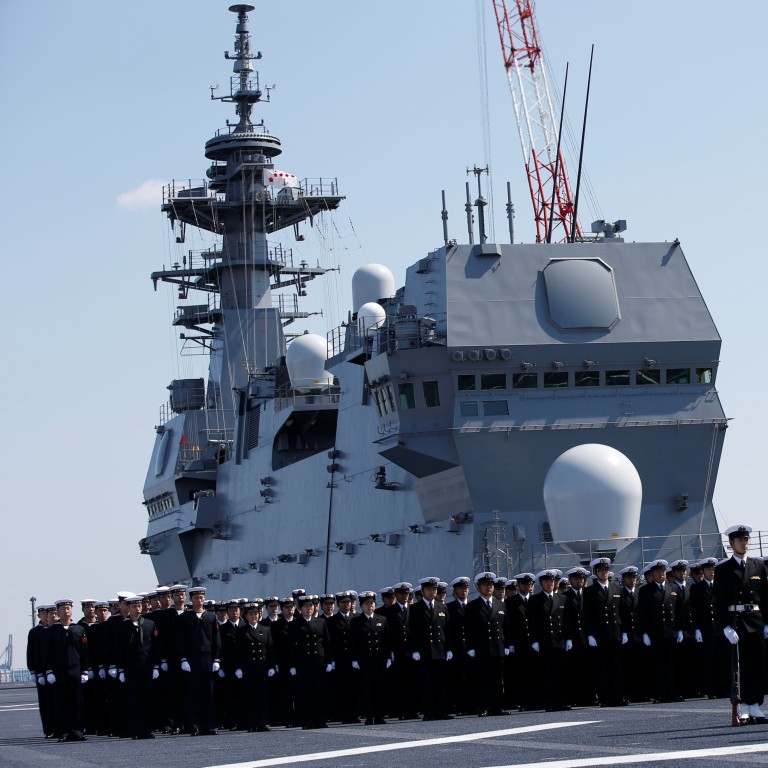
China’s military expands and the US waffles, leaving Japan’s defence planning in search of the right balance
- Tetsu Mizuno says that Beijing’s growing military capabilities, along with unclear US policy in East Asia, mean Japan’s recent defence planning is aimed at maintaining the balance of power
As for the fighter aircraft, the current F-15s (99 planes) will gradually be switched to F-35A and F-35B, and since they will be deployed to SDF land bases, the defence policy specifies that “when necessary, operation of STOVL aircraft from existing vessels will be made possible”.
There has been discussion over whether this modification of the Izumo means Japan will now possess an attack aircraft carrier, and whether that would violate a constitution that stipulates an exclusively defence-oriented policy. China has even expressed fears that Japan’s new defence programme represents accelerating militarisation.
Nevertheless, there are reasons why Japan went ahead with modification of the Izumo. One was to maintain the balance of military power around Japan. If Japan were to neglect its defence capabilities, surrounding countries would only become stronger and Japan would end up destroying the regional balance. Fundamental defence capabilities should be maintained; i.e., a defence capacity at a level that does not invite attack due to insufficiency within a nation’s own defence capabilities.
There is a need to show deterrence ability towards China, which is strengthening its defence capability year by year, broadening its naval expansion and also extending its activities in the Pacific region near Japan.
What’s more, if at the second US-North Korea summit next year the US should decide that the threat from North Korea does not extend to itself, and thus indicate that it will permit or ignore the nation’s possession of nuclear weapons, Japanese concerns will change to actual fear since Japan is within striking range of North Korean missiles.
Among experts, there is an argument that, since the situation is different from during the East-West cold war, we need to anticipate that the Japan-US Security Treaty will not function. In any case, there is a proviso to Article 5, which is that the US would act “in accordance with its constitutional provisions and processes”. Whether the US Congress would allow the use of military force to help Japan in an emergency would depend greatly on the US domestic situation at the time, and it is not a complete guarantee.

Japan is an island nation with many isolated islands and groups of islands. Needless to say, air power is the key to defending, observing and monitoring those borders. If that air power only operates from land bases, there is an increasing danger that Japan will not be able to respond to the situations that have occurred nearby in recent years. If Japan can operate F-35Bs from the Izumo destroyer, even in a limited way, it can compensate for that weakness and exert a measure of deterrence towards regional threats.
Despite the fact that the recent defence programme guidelines were put together before a background of threats and fears in the region, Japan must avoid force-based deterrence. Collection and analysis of detailed information, calm and objective response and coordination, as well as preparation, will all continue to be important issues for Japan’s future defence.
Japan must aim for an equal balance of power in the region based on its exclusively defence-oriented policy and also actively forge ahead with its cooperative capabilities based on politics and diplomacy.
Tetsu Mizuno is a freelance journalist based in Tokyo, Japan
